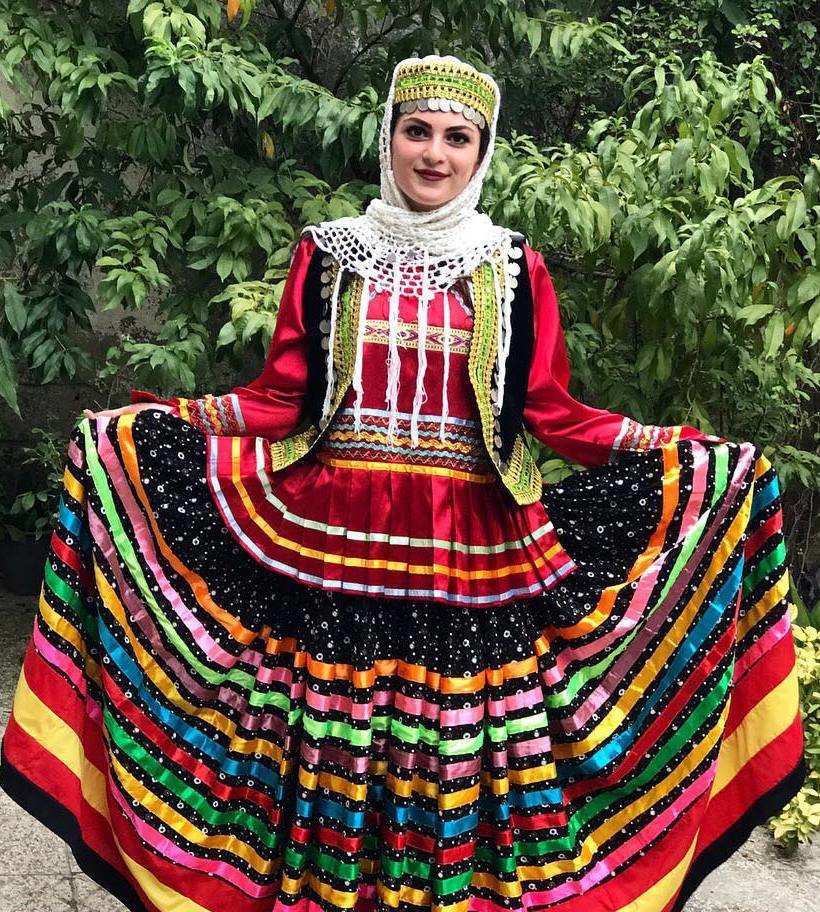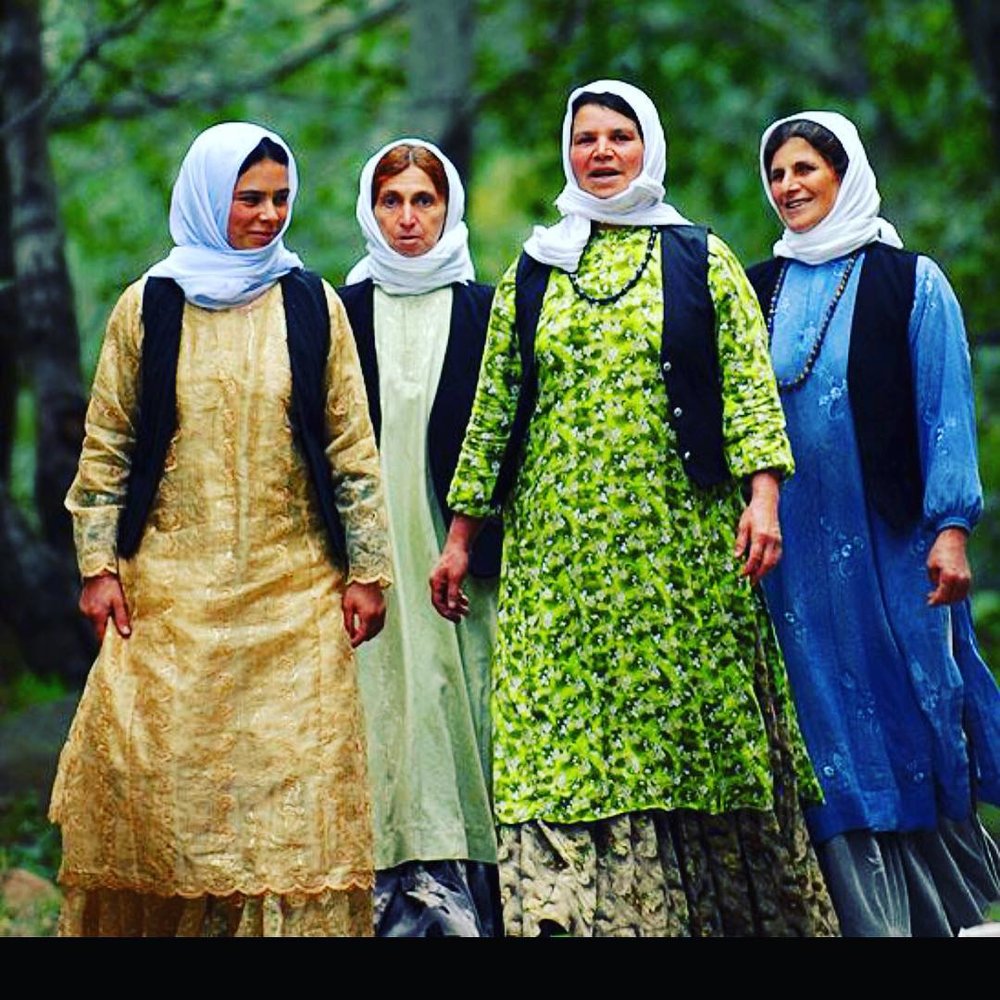Women’s costume in Gilan province

In Gilan province, northern Iran, women traditionally cover their head and hairs with ‘lachak’, which is a kind of scarf.
Its color and shape is differently arranged according to the woman’s age and the place she lives in.
In lowlands, scarf, which is usually in dark colors, is folded into a triangle and wrapped above the ears and its two tails are knotted on forehead.
In eastern Gilan, women fold a black cloth into a triangle around their forehead and knot it at the back, with the free ends used to cover their hair; sometimes the ends are knotted on top of the scarf.
Women wear a ‘dastmal-e sefid’, a white shawl, outside their home. It is a square white scarf folded into a triangle and knotted under the chin. Its tails are fastened around the neck or knotted on the forehead.
In some part of the province, the white shawl is worn on lachak. The way it is knotted or placed on the head indicate the age, marital status and the region of the woman who wears it.
Long tunic is the main part of women outfit in highlands of the province. Made from printed cotton cloth, called ‘chit’, it is covers from the neck to the thighs or knees or ankles. Two slits at the sides allow greater fullness at the bottom.
It has long narrow sleeves, which turns into short sleeves in lowlands.
Its top has a narrow band collar and a placket in front to permit nursing, which is framed with ribbon and has buttons and buttonholes.
Qasemabadi costume is decorated with variegated braids on the lower part of the garment.
Generally a skirt is worn with the tunic. Over the tunic, women wear a ‘jeliqah’ or waistcoat or older women wear straight jacket open at the front, both of them are usually in black color.

One of distinctive pieces of clothing worn by Gilak women is chadorshab, a rectangular piece of cloth folded into a triangle and worn knotted around the waist for daily work or wrapped around the bosom to carry an infant on the back. It is made from strips of cloth woven of silk floss.
‘Tuman’, a long gathered skirt, with the tunic constitute the basic Gilak female dress.
It is tightened to the waist with drawing a cord to gather the cloth. The color, length and density of gathering indicate the age of woman who wears it.
The younger women wear skirts to their calves in red or with bright color floral motif while old women usually wear skirts falling to toes and has dark background with small motifs.
Women often wear two or three skirts, usually the newest one on the top.
They wear black pantaloons under their skirts. The pantaloons are close-fitting and ankle-length.
Traditionally peasant women were barefoot. However, in recent decades most women wear molded rubber shoes, the galoshes, which were imported to Iran from Riga and St. Petersburg at the beginning of this century.
Iranians in different parts of the country used to wear ethnic costume in past time. In some regions, people still use traditional dresses. The clothes reveal facts about lifestyle, history and beliefs of the locals.
SB/MQ/MG
Leave a Comment